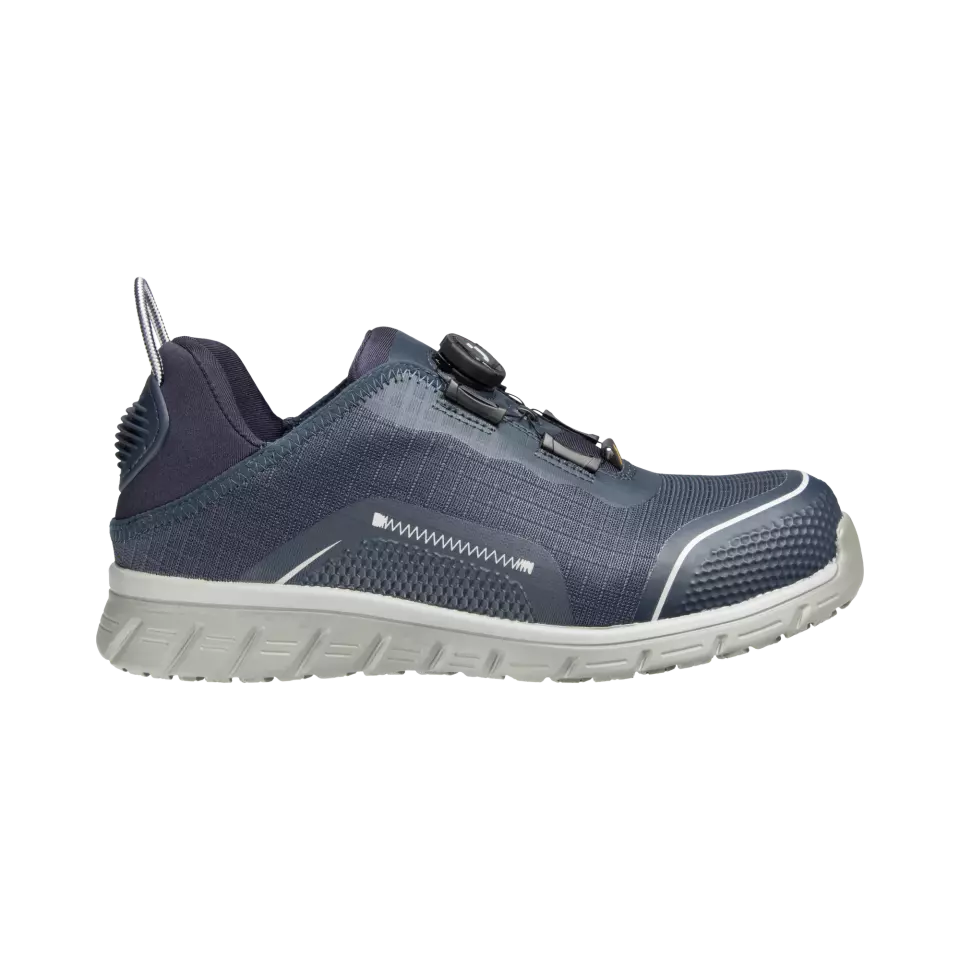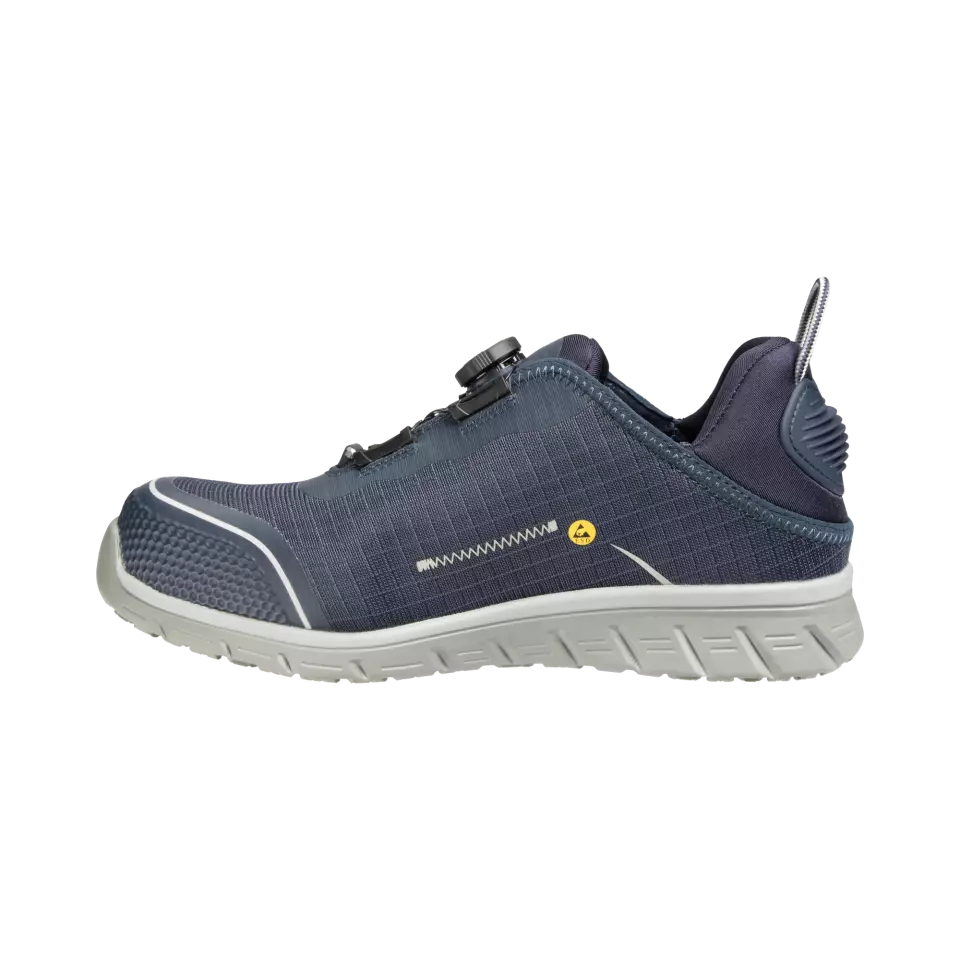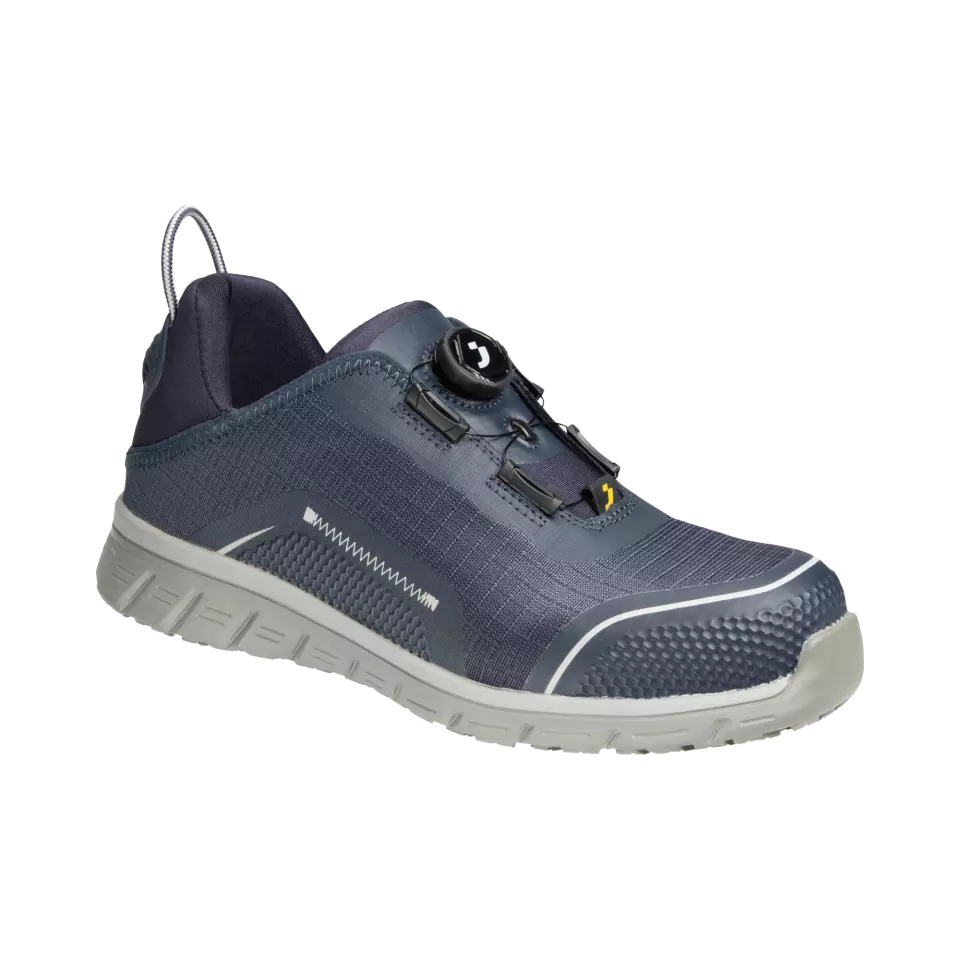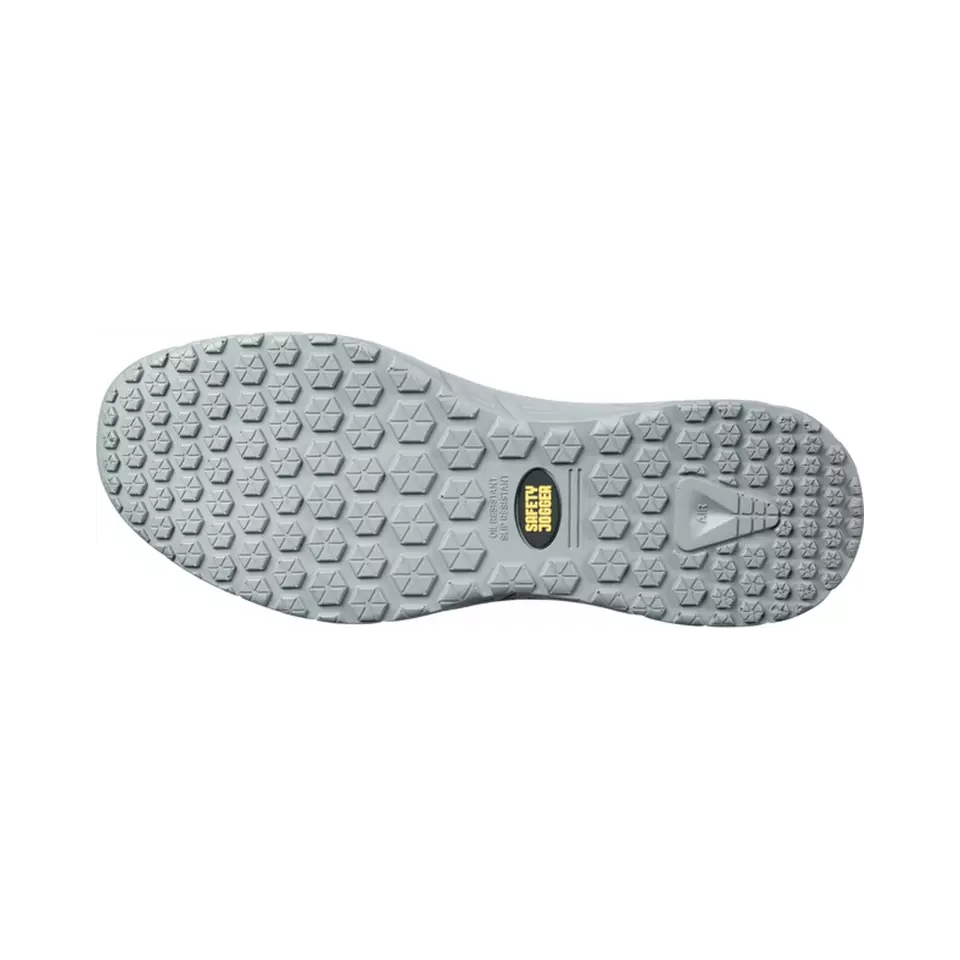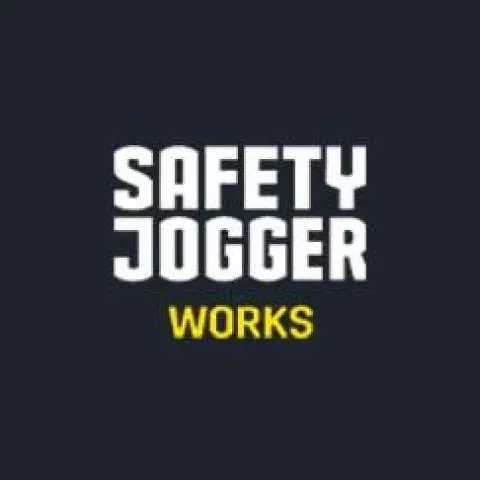Safety Jogger LIGERO2 S1P LOW TLS Safety shoes, navy
Safety Jogger
visit storeProduct description
This ultra-lightweight safety sneaker combines exceptional protection with sporting comfort for light industrial applications. Featuring an innovative TLS (Twist Lock System) closure that allows one-handed operation even with gloves, the shoe delivers metal-free protection through its ultralight nanocarbon toe cap and flexible puncture-resistant midsole. The breathable textile upper and SJ foam footbed enhance comfort during extended wear, while the PU outsole provides reliable SRC-certified slip resistance.
Product Features:
- Ultralight design with sample weight of only 0.465 kg
- TLS closure system for quick, precise adjustment with one hand
- Breathable textile upper for improved moisture management
- Wide fitting for enhanced comfort
- Metal-free construction ideal for security-sensitive environments
Technical Details:
- Nanocarbon toe cap with no thermal or electrical conductivity
- Non-woven puncture-resistant midsole covering 100% of foot area
- PU outsole with SRC slip resistance certification
- Antistatic properties (72.8 MegaOhm) and ESD protection (57.8 MegaOhm)
- Heel energy absorption of 26 J exceeding the 20 J standard requirement
Recommended Applications:
- Assembly, Automotive, Logistics, and Industrial environments
- Dry working conditions
- Situations requiring frequent passage through metal detectors
Standards:
- S1P/ESD, SRC safety category
- ASTM F2413:2018
- EN ISO 20345:2011
Determines the visual appearance of the shoe, affecting workplace compliance, professional look, and personal preference.
The method used to secure the shoe to your foot, affecting how easy it is to put on and take off.
Indicates the level of protective features, from basic safety compliance to enhanced protection with additional guards and reinforcements.
Protect your feet from sharp objects and unseen hazards, giving you peace of mind on any job site.
Anti-slip soles provide superior grip, keeping you safe and steady on challenging surfaces.
The color of the shoe's bottom sole, allowing coordination with workplace requirements or personal style preferences.
The material used in the protective toe cap, determining the level of impact protection, weight, and suitability for different work environments.
The material used to construct the shoe's bottom surface, affecting slip resistance, durability, chemical resistance, and comfort for different work environments.
- Electrical Protection
- Slip Resistant
Request a free sample
Test first and buy later. Visit any product page to request your free sample.
Standards and labels
Test results
General Requirements PEN ISO 20345:2011 specifies safety requirements for footwear used in a range of industries to protect wearers from mechanical risks and other workplace hazards. The 'P' designation indicates that the footwear has been tested for penetration resistance, which means it can withstand a force of up to 1100 Newtons from sharp objects like nails. This test is conducted by applying a specified force to a nail or similar sharp object against the sole of the footwear to ensure it cannot penetrate through to the foot. Footwear meeting this requirement is essential for industries where workers are at risk of stepping on sharp objects, such as construction or manufacturing, providing a critical level of protection to the wearer's feet.
General Requirements CRThe standard EN ISO 20345:2011 encompasses general requirements for safety footwear to ensure they provide adequate protection in various occupational environments. Rating 'CR' signifies that the footwear has a cut resistant upper ensuring enhanced protection. The test method involves assessing the material's resistance to splitting or cracking under certain conditions, which simulates real-world industrial hazards involving sharp objects or surfaces. Practically, this result ensures that the footwear is suitable for environments where there is a risk of materials splitting or getting caught, thereby providing essential safety benefits to the user.
General Requirements S1The designation S1 under the EN ISO 20345:2011 standard signifies a basic level of safety footwear which includes several important features. Specifically, a footwear labeled as S1 has 200 joules toe cap, fully enclosed heel, anti-static protection, and energy absorption in the heel. The testing method to confirm the S1 classification generally involves specific conditions and apparatus to measure the effectiveness of the footwear under these criteria. For instance, the heel energy absorption is often tested by dropping a weight onto the heel and measuring the force transmitted through the footwear to simulate real-world impacts during usage. Meeting the S1 requirement implies that the footwear can adequately protect users in environments where static electricity, basic impacts, and exposure to fuel-related chemicals are a concern. This tag therefore allows safety managers and procurement professionals to match footwear to known workplace hazards, ensuring a suitable level of protection for employees in varied industrial settings.
Textiles are materials made from fibers, such as cotton, wool, or polyester. In Europe, there are rules for how textiles should be made, sold, and labeled. These rules are set by the European Union. These rules ensure that textiles are safe and do not contain harmful chemicals, that they are labeled correctly and that the use of certain dangerous chemicals are banned. These rules are set to protect the health and safety of consumers and the environment. Companies that make or sell textiles in the EU must comply with these rules.
CE Marking is a label that shows a product meets certain safety and environmental standards set by the European Union. To get the CE Marking, a company must test and certify their product meets these standards. CE Marking is required for many products sold in the EU, including electronics, machinery, toys and medical devices. It helps ensure that products are safe for consumers and the environment, and allows for easy trade within the EU.
PPE stands for "personal protective equipment." PPE Category 1 refers to equipment that is simple and easy to use, and has a lower level of risk. Examples of PPE Category 1 include gloves, goggles, and simple respirators. In Europe, PPE Category 1 must meet certain safety standards set by the European Union. This means that it must be designed and manufactured to protect the user without causing harm. Companies that make or sell PPE must prove that it meets these standards.
Safety Jogger delivery terms
Free delivery when you order more than 150,00 € from Safety Jogger
Supplier shipping fee 6,33 €
Brand minimum 0,00 €
78,11 €
Shipping fee is 6,33 € for orders under 150,00 €
Sold in units of one pair
Need larger quantities?
Other products you may like
Recently viewed
Need help?
Get help from our experts
Other products you may like
Similar products you may like
Autonomous sourcing platform
The most efficient way to source and order supplies for your operations
Sourcing
Ordering
List products you’re looking for and we’ll find the best products and prices for you – all for free.
Need help?
Get help from our experts
